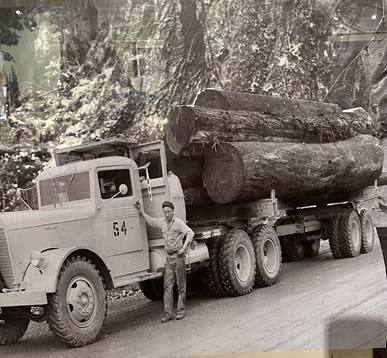The postwar housing boom caused Washington lumber companies to increase their harvests from 3.3 billion board feet in 1945 to 5 billion board feet in 1951. Weyerhaeuser’s Snoqualmie Mill was the Valley’s largest employer, with about 1,100 employees. There were also dozens of smaller logging companies with only a few employees.
In order to avoid being forced to leave their ancestral lands, some Snoqualmie Tribal Members worked in the logging industry. This allowed them to live on their traditional homelands and access resources on land then restricted by timber companies. Most other logging industry workers were a mixture of older first-generation immigrants from Northern European countries and second- and third-generation European Americans who had moved from the mid-West.
Jobs in the timber industry were diverse. These included building logging roads, falling trees, operating heavy equipment, working in the mill, sharpening blades, selling lumber, working as a mechanic to keep equipment operating, and replanting trees.
The conservation movements of large timber companies and government agencies focused on reforestation, fire protection, and other related issues to mitigate the pollution, ecological destruction, and other dangers the industry was creating. The damage to the ecosystem was irreversible and the old growth forest they logged was irreplaceable.
![]()
